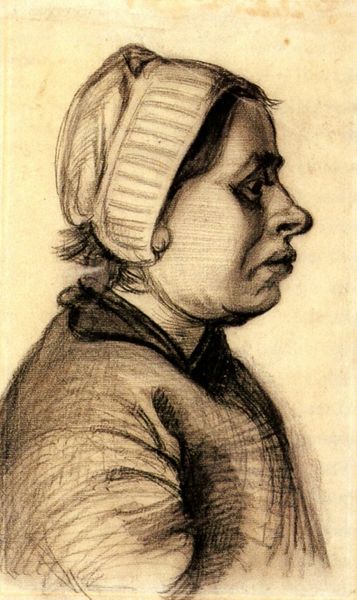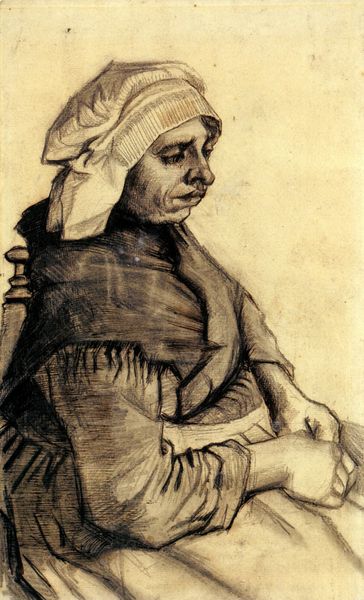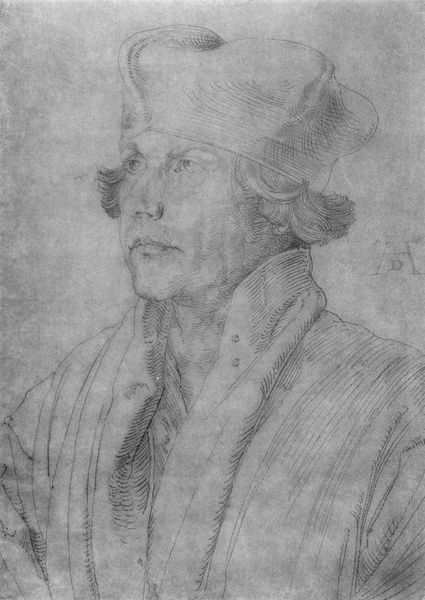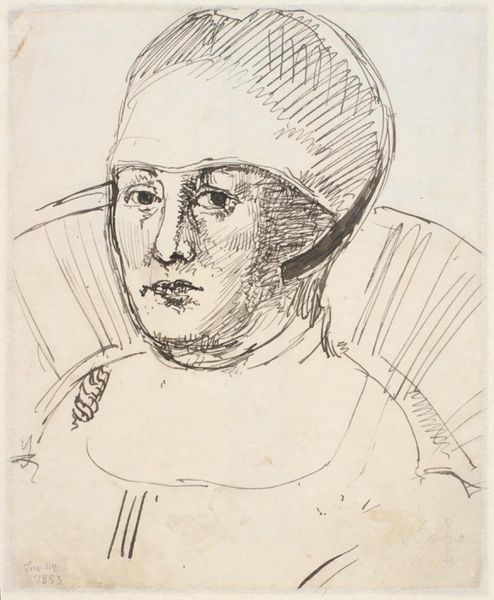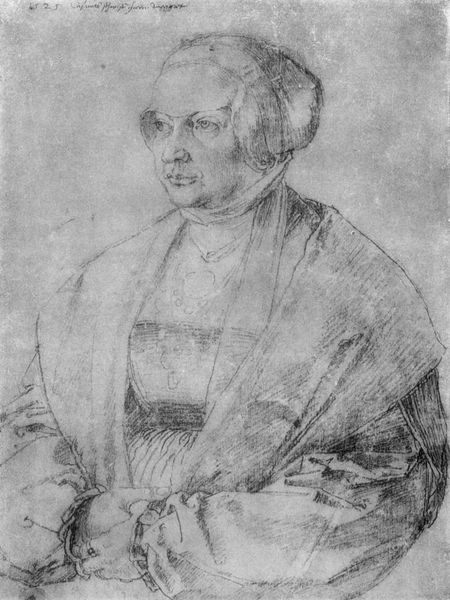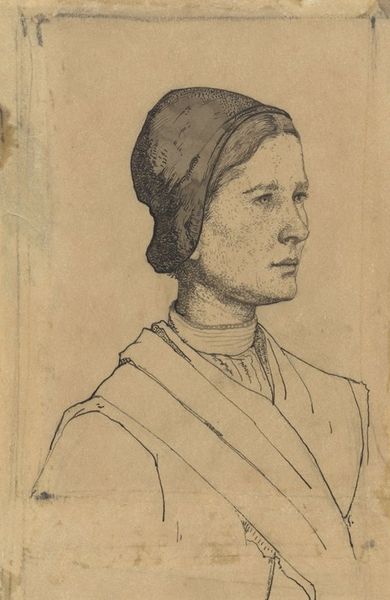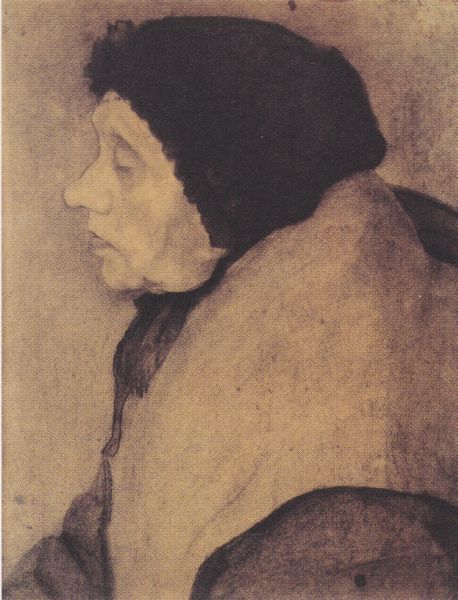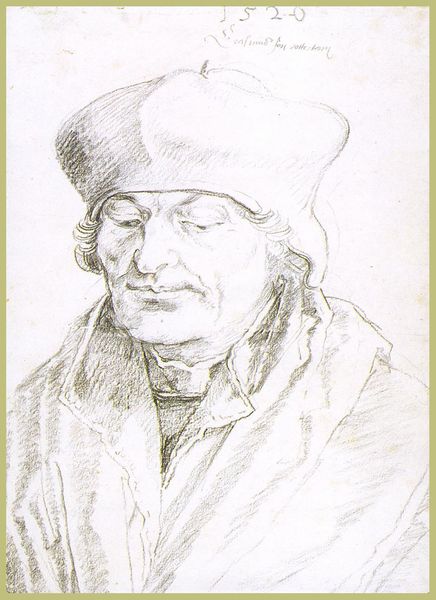
drawing, charcoal
#
portrait
#
drawing
#
dutch-golden-age
#
charcoal drawing
#
figuration
#
charcoal
#
realism
Copyright: Public domain
Curator: Standing before us is Vincent van Gogh’s charcoal drawing, "Head of a Woman," created in 1885. It resides here at the Van Gogh Museum. What strikes you initially? Editor: The somber mood is really intense, almost tangible. The stark contrasts in the charcoal create such depth, emphasizing the contours of her face. It's not classically beautiful, but incredibly expressive. Curator: Absolutely. Note the visible hatching and cross-hatching – Van Gogh's hand is evident. The raw quality of the charcoal highlights a departure from idealized representation, pointing instead to a working-class aesthetic and ethic. How do you see its relationship to art and labor? Editor: It’s clear that the very materiality of the charcoal emphasizes process. There’s an unvarnished quality, in his precise capturing of the woman's features: her slightly downturned eyes and prominent nose all contribute to the powerful realism. Her gaze is averted as if in deference. Curator: This drawing offers insight into the world Van Gogh immersed himself in. It's important to recall Van Gogh's dedication to portraying working-class individuals. Consider what was happening in that same era. He wanted to depict those marginalized by rapid industrialization and its consumption culture. Editor: I notice that, compositionally, Van Gogh frames her face in a way that accentuates her gaze. It gives her presence but it feels as if it comes at an uncomfortable cost, a voyeuristic one at the expense of what he's trying to showcase through her depiction. The overall effect is thought-provoking. Curator: His deliberate emphasis on this subject reveals his deep empathy, using her visage to provoke contemplation. Think, for instance, about how it confronts ideas about gender roles during this historical moment. Editor: What resonates with me most, beyond any social critique, is the artistry displayed within the work's limited tonal range and through Van Gogh’s expressive marks. A careful, formal consideration provides clarity to Van Gogh’s own sentiments as much as to those who sat for it. Curator: Examining this piece further allows us to better understand not just his artistic choices, but also his deeply felt convictions, an important testament. Editor: Indeed. This portrait really exemplifies art’s capability of speaking about deeper social contexts through strong formal devices.
Comments
No comments
Be the first to comment and join the conversation on the ultimate creative platform.
